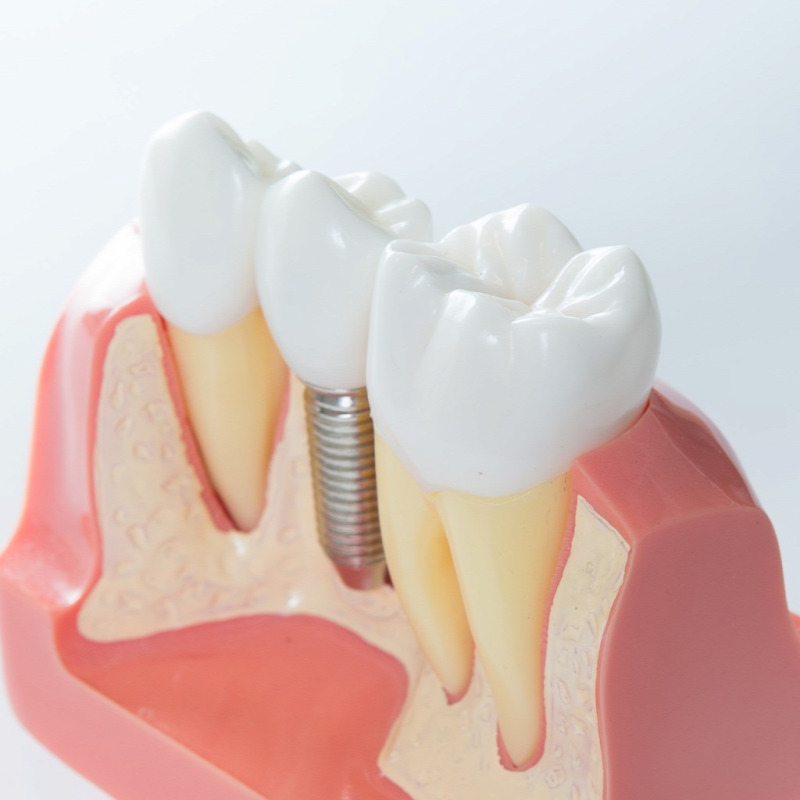Dentist implants
Dental implants are technological devices used in tooth replacement to replace missing teeth by a doctor. Dental implants provide a durable and stable solution for tooth replacement and allow for a natural-looking and functional tooth replacement.
A dental implant is a screw-shaped implant made of plastic or titanium material that is inserted into the jawbone. This implant is organically integrated with the jawbone through a process called osseointegration, which ensures a strong and stable fixation.

The implant is fixed to the prosthesis, which can be a crown, bridge or denture. The material of the restoration can be ceramic, metal-ceramic or all-metal and is placed in place of the missing tooth by the dental implant.
Dental implants offer many advantages over traditional tooth replacement methods. These include aesthetically appealing results, a natural-looking tooth replacement, improved bite function and overall comfort. Dental implants offer a long-term solution and are cared for and cleaned in a similar way to natural teeth.
However, it is important to remember that dental implants are a surgical procedure and their effectiveness can be affected by individual health, the quality of the jawbone and other factors. Therefore, prior consultation with a dentist is necessary to properly assess the patient's condition and recommend the most appropriate tooth replacement options.
In order to achieve successful and long-lasting results with dental implants, thorough preparation and proper intervention are important. Implant placement usually involves several steps.
Condition assessment and planning: the dentist will perform a thorough examination to assess the condition of the jawbone and gums. Then, using planning software or 3D imaging, the dental implant placement is planned to best fit the patient's oral cavity.
Implant insertion: the implant is inserted as a surgical procedure. The dentist applies local anaesthesia and then makes a small incision in the jawbone through the gum, and then places the implant in the jawbone using special drills and implant placement devices. The implant is usually placed where the tooth is missing and the gum is closed with sutures.
Healing time. This allows for a firm attachment between the implant and the jawbone called osseointegration. This process usually takes a few months and undermines the stability and durability of the implant.
Making a dental restoration: once the implant is fully seated and stabilized, the dentist makes a dental restoration for the dental implant. This can be a tooth replacement crown, bridge or even a denture to replace the missing tooth. The material and design of the tooth replacement will depend on individual needs and the dentist's recommendation.
It is important to note that the treatment process and weeks for dental implants can vary between patients. Individual circumstances, such as the quality of the jawbone, health conditions and the type of implant may affect the treatment process. Therefore, it is important to have an individual consultation with your dentist in order to find the best solution for tooth replacement and dental implant placement.


